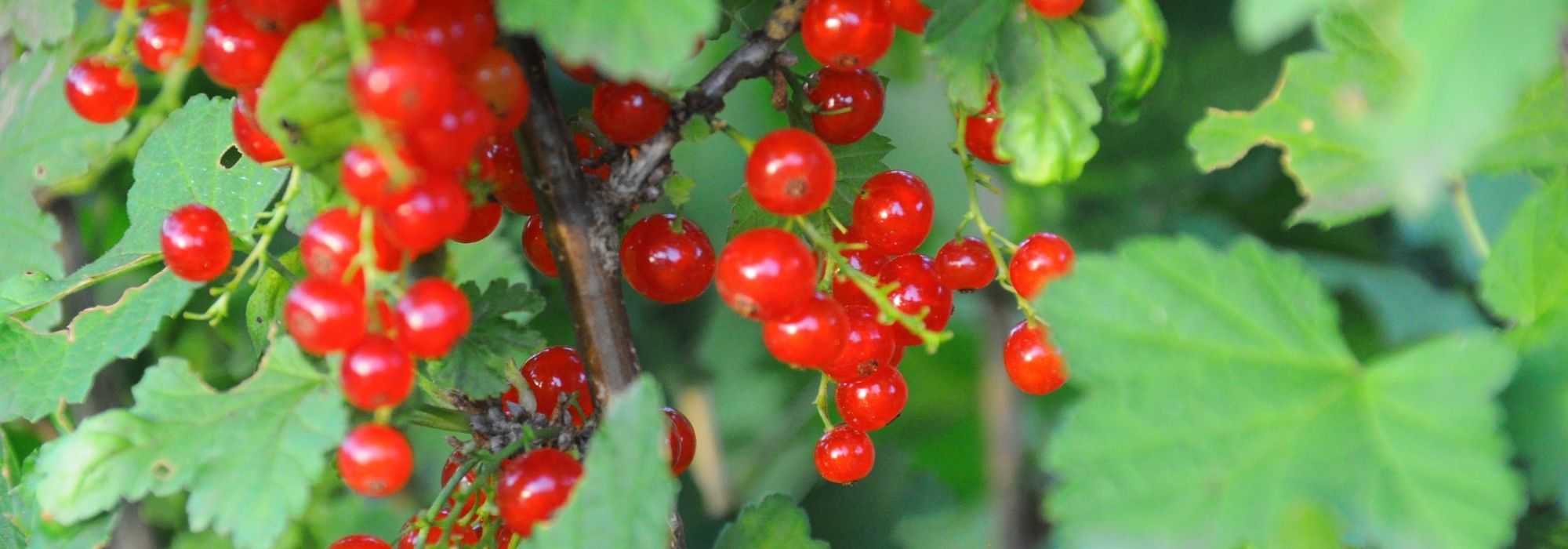
Planting gooseberries in bare roots
Where, when, and how?
Contents
Amateur of red fruits, you have decided to buy a redcurrant bush in bare roots. However, opting for this type of packaging can raise many questions regarding planting. Indeed, there are a few rules to follow to ensure successful cultivation. Before planting bare root redcurrants, dressing, root soaking, and soil preparation are obligatory to see your bush thrive. With a lovely harvest of redcurrants that are more or less sweet and tangy depending on the variety, you can delight your taste buds with redcurrant jam, syrup, or even fruit pastries! Whether you have chosen a cluster, grape, or gooseberry redcurrant, discover all our tips for planting bare root redcurrants!
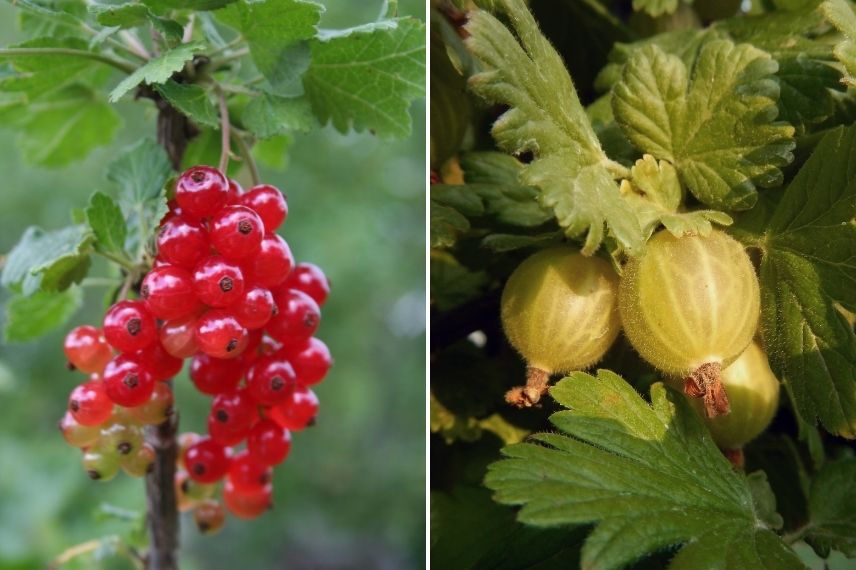
Cluster redcurrant and gooseberry redcurrant
When to plant bare root currant bushes?
Gooseberries in bare roots are preferably planted in autumn, from October to March, during the dormant period. To ensure the successful establishment of your fruit bush, plant it outside of frost, snow, or prolonged rain periods.
Read also
Currant bush: planting, pruning and careWhere to plant a currant bush?
Gooseberry prefers sunny situations, but not scorching ones, as it cannot tolerate drought. If you live in a region with very hot summers, place it in partial shade instead. Also protect it from drying winds, for example by positioning it near the house, which will provide shade during the hottest hours of the day and act as a windbreak. Note that even though it is very hardy, the gooseberry can suffer during extremely harsh winters that affect fruiting.
Gooseberry has a preference for humus-bearing, deep, well-drained soils that are especially cool in summer. If necessary, add sand to improve drainage and lighten the soil. Also, be aware that gooseberry grows better in neutral or slightly acidic soil than in calcareous soil. Compost, heather soil, or pine bark mulch can help address this issue by acidifying the soil and lowering its pH.
Discover other Redcurrant bush
View all →Available in 0 sizes
Available in 1 sizes
Available in 3 sizes
Available in 1 sizes
Available in 1 sizes
Available in 1 sizes
Available in 1 sizes
Available in 1 sizes
Available in 2 sizes
Available in 1 sizes
How to plant a gooseberry bush with bare roots?
The necessary equipment
- currant bushes with bare roots
- pruning shear
- large bucket or bin
- cow dung, manure or ready-to-use pralin
- spade, fork or aerating fork, pickaxe, shovel
- well-decomposed compost or potting soil
- watering can
- mulch
Root dressing
Before planting your currant bushes, you need to trim the roots. This is known as root dressing. This will stimulate the root system and encourage new rootlets to appear. Using your well-disinfected and sharpened pruning shear, cut away any dead or damaged roots and shorten any that are too long. Do not be too severe; this is a light pruning.
Root coating
To rehydrate the roots, proceed with coating the roots of the currant bushes. Ideally, soak them for 24 hours before planting in a muddy mixture that acts as a care mask. The cuts from the dressing will heal more easily, and the chances of the plants taking root will be better. Here are our tips for preparing the pralin:
- Get your large bucket. Add ⅓ garden soil and ⅓ fresh cow dung (or fresh horse manure).
- Then, gradually add ⅓ rainwater while mixing. You will obtain a consistent mixture.
- Dip the currant bushes in it and ensure the pralin adheres well to all the roots and rootlets.
- Let them rest in the bucket until the next day.
- Tip: you can also replace the cow dung with well-decomposed compost or granulated manure.
Pruning before planting
This is necessary to achieve a well-formed bush, a homogeneous clump, and to ensure good light diffusion within the foliage from spring. With your pruning shear, cut back all stems above the 3rd or 4th eye facing outward. Cut at an angle. Remove any dead or damaged branches as well as those located in the centre of the branches. Keep only 4 or 5.
Planting currant bushes with bare roots
For all plants sold with bare roots, drying out in the open air can be fatal. It is therefore imperative to plant your currant bush as quickly as possible after receipt! Not tolerating heavy, compact, and overly moist soil, soil preparation should not be neglected before planting the currant bushes.
- Work your soil using a spade or aerating fork.
- Weed and remove the largest stones.
- Dig your planting hole. It should be twice the volume of the roots of your plant.
- Loosen the soil at the bottom of the hole and add compost or potting soil. Mix.
- Place your currant bush in the centre of the hole.
- If you wish to plant several currant bushes side by side, space your plants 1.20 to 1.50 m apart.
- For planting several rows of currant bushes, ensure there is at least 2 m between each row, so that each plant receives optimal sunlight.
- Incorporate compost or potting soil into the extracted soil before backfilling your hole.
- Gently compact the soil with your foot and check that the collar of the currant bush is level with the soil surface.
- Create a basin and water generously.
- To prevent the growth of weeds in spring, lay a layer of mulch at the base of the currant bush (mulch, coconut chips, hemp mulch, etc.).
You will need to be patient before you can harvest your first currants. Indeed, the first fruiting occurs only on shoots that are 2 years old.
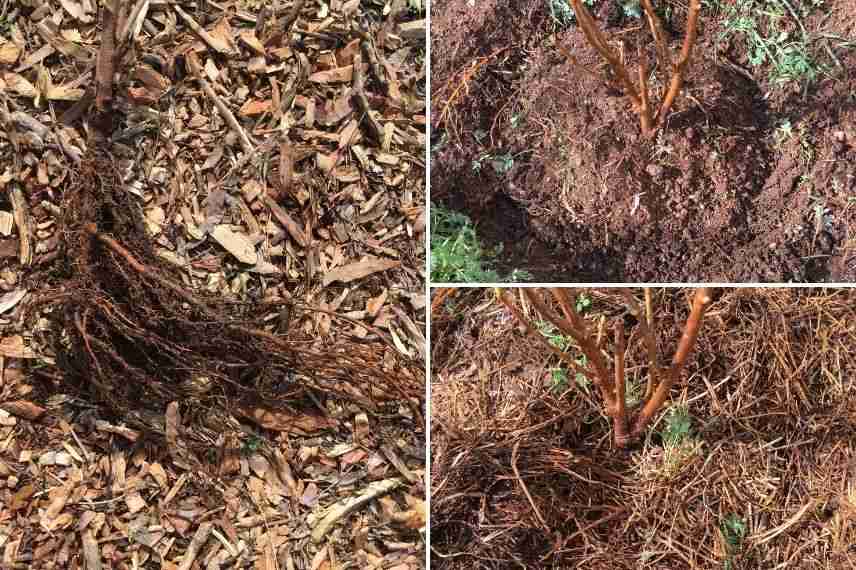
Bare roots of currant bush. Water generously at planting and mulch (photos Gill King – Flickr).
Caring for gooseberry bushes
During the first two springs and summers following planting, watering the currant bush must be closely monitored and regular, especially during hot weather. Indeed, just like the raspberry bush, the currant bush cannot tolerate drought. The soil should always remain moist, and mulching is a good way to retain moisture. Every year at the beginning of spring, apply fertiliser for soft fruit. Also, remember to prune your currant bush. To ensure a good harvest each year, it is necessary to rejuvenate it. Even though it is not very susceptible to diseases, the currant bush can be affected by various ailments: anthracnose, rust, powdery mildew. Some pests like scale insects, aphids, and mites can also attack it.
⇒ Find all the information regarding pruning currant bushes in our advice sheet.
⇒ To learn everything about the currant bush, check our sheet Currant: planting, pruning, and care
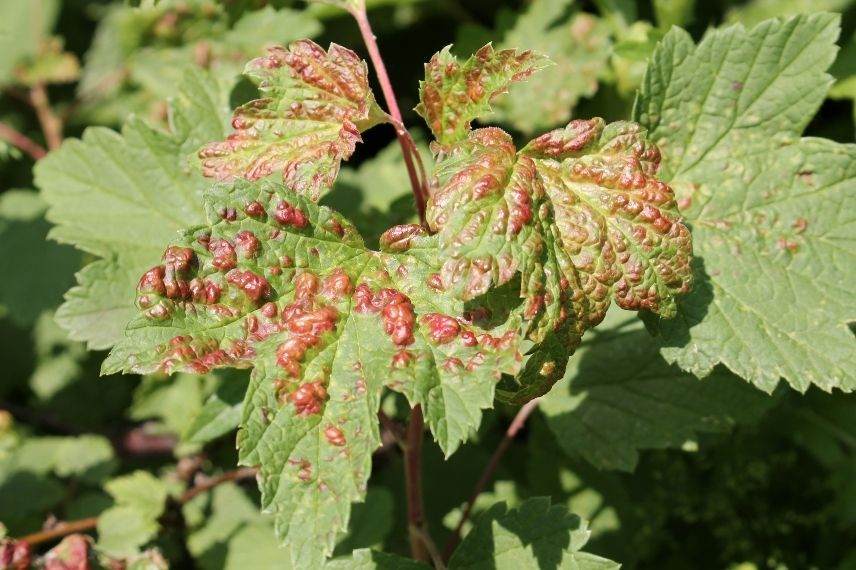
Leaves affected by the yellow currant aphid (Cryptomyzus ribis)
- Subscribe!
- Contents
































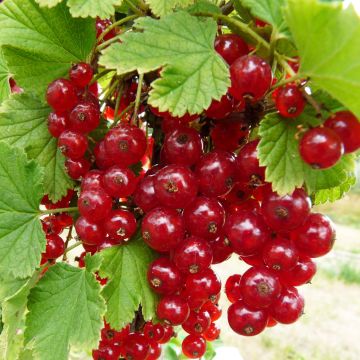
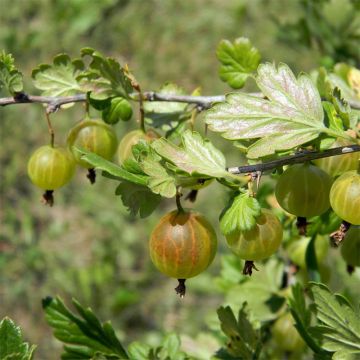
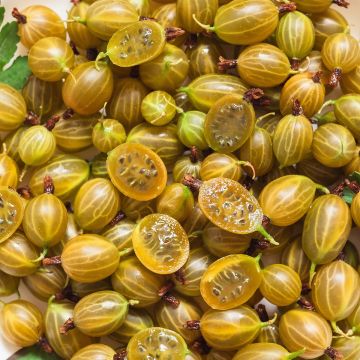
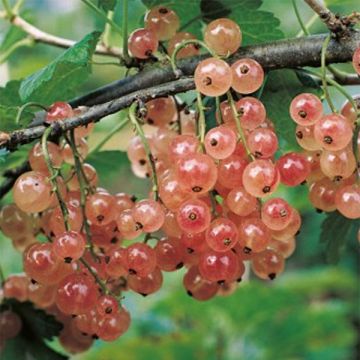
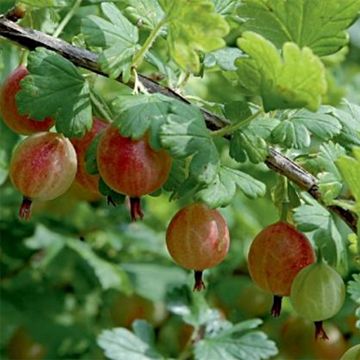

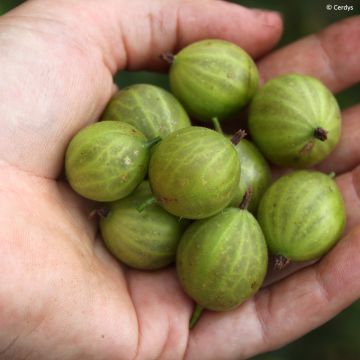

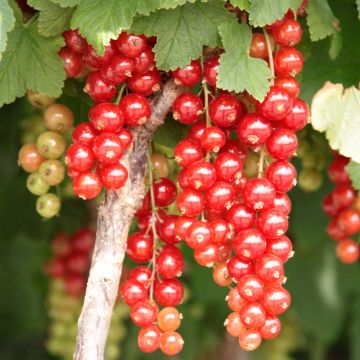
Comments